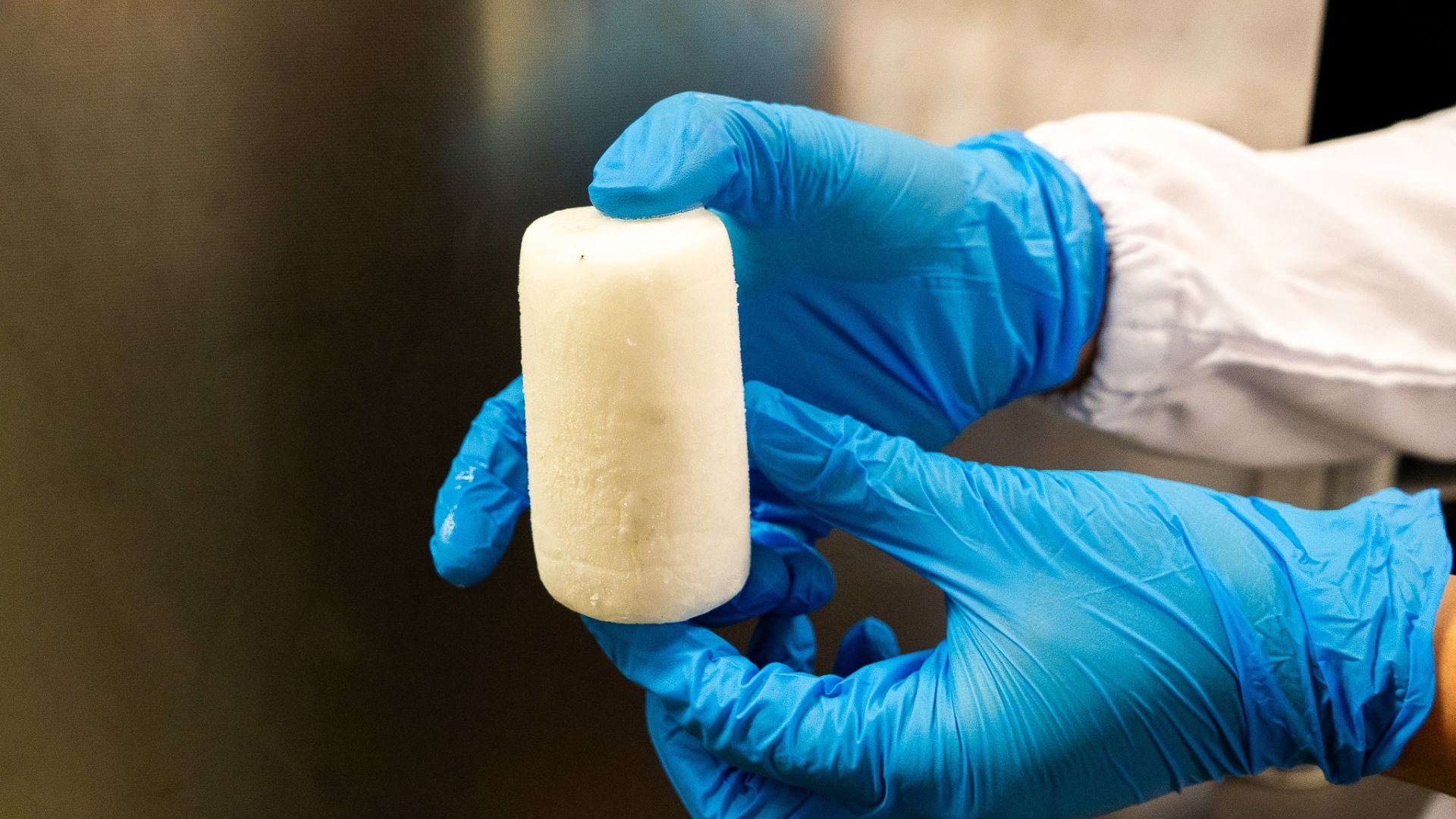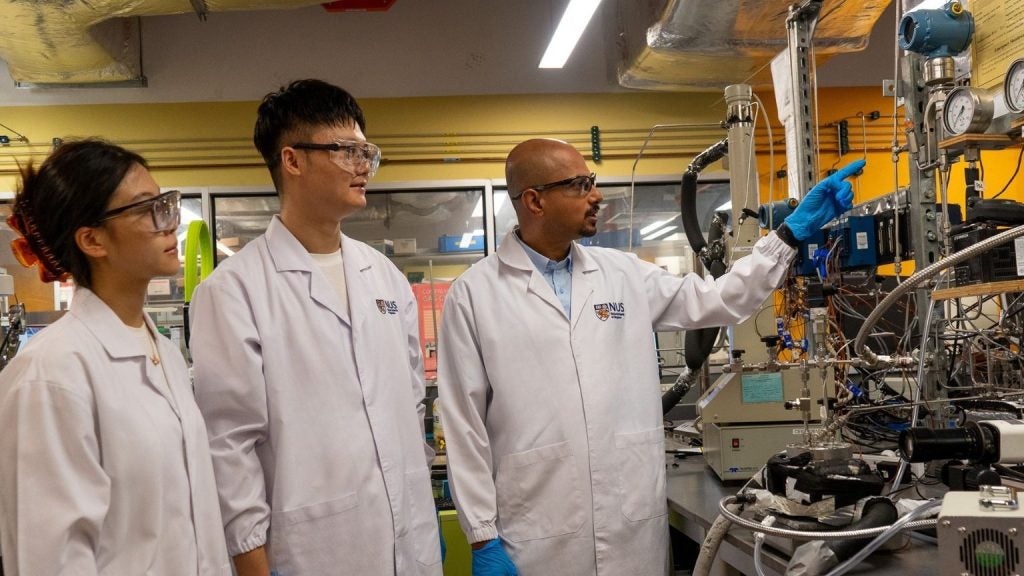
If you have ever cooked on a gas stove or seen a flame flicker to life with the turn of a knob, you have seen natural gas in action. Supplying that energy at scale, however, is far more complicated. Today, natural gas is mostly stored under high pressure or cooled into liquid at -162 °C — both methods that are energy-intensive and costly. An alternative approach, called solidified natural gas, locks methane inside an ice-like cage known as a hydrate. But in practice, these hydrates usually form far too slowly to be practical on a larger scale.
Researchers led by Professor Praveen Linga from the Department of Chemical and Biomolecular Engineering at the College of Design and Engineering, National University of Singapore, have found a simple workaround by adding amino acids — the building blocks of proteins. In a new study ‘Rapid conversion of amino acid modified-ice to methane hydrate for sustainable energy storage’ published in Nature Communications, the researchers showed that freezing water with a small amount of these naturally occurring compounds produces an “amino-acid-modified ice” that locks in methane gas in minutes. In tests, the material reached 90 per cent of its storage capacity in just over two minutes, compared with hours for conventional systems.

The method also brings environmental benefits. Because amino acids are biodegradable, the method averts the environmental risks posed by surfactants often used to speed up hydrate formation. It also allows methane to be released on demand with gentle heating, after which the ice can be refrozen and reused, creating a closed-loop storage cycle. This combination of performance and sustainability makes the approach attractive for large-scale natural gas storage as well as for smaller, renewable sources of biomethane. The team also sees potential for adapting the technique to store other gas, including carbon dioxide and hydrogen.
Faster hydrates with a biological twist
The concept behind the new material is highly effective yet elegantly simple: mix water with amino acids, freeze it and then expose the ice to methane gas. In the lab, this amino-acid-modified ice quickly transformed into a white, expanded solid — evidence that methane had been locked inside as hydrate. Within just over two minutes, the material stored 30 times more methane than plain ice could hold.
This is possible because amino acids change the surface properties of the ice. Hydrophobic amino acids such as tryptophan encourage the formation of tiny liquid layers on the ice surface as methane is injected. These layers act as fertile ground for hydrate crystals to grow, producing a porous, sponge-like structure that speeds up gas capture. By contrast, plain ice tends to form a dense outer film that blocks further methane from diffusing inward, slowing the process dramatically.
To probe what was happening at the molecular level, the team turned to Raman spectroscopy, a technique that tracks how light scatters from vibrating molecules. These experiments showed methane rapidly filling two types of microscopic cages inside the hydrate structure, with occupancies above 90 per cent. “This gives us direct evidence that the amino acids are not only speeding up the process but also allowing methane to pack efficiently into the hydrate cages,” said Dr Ye Zhang, the lead author of the paper, a Research Fellow from the Department of Chemical and Biomolecular Engineering.
The team also tested different amino acids and found a clear pattern. Notably, hydrophobic ones like methionine and leucine worked well, while hydrophilic ones such as histidine and arginine did not. This “design rule,” Prof Linga said, could guide future efforts to tailor ice surfaces for gas storage.
From lab results to energy storage cycles
The researchers’ work is still at the proof-of-concept stage, but the performance of the modified ice is very promising. At near-freezing temperatures and moderate pressures, the amino acid ice outperformed some of the most advanced porous materials, including metal-organic frameworks and zeolites, used for storing natural gas — not only in how much methane it could hold, but also in how quickly it filled. And unlike surfactant-based systems, it did not produce foaming during gas release, which is a major hurdle for large-scale operation.
Equally important is the ability to empty and reuse the system. By gently warming the hydrate, the team could recover all the stored methane. The leftover solution could then be frozen again to form fresh amino acid modified ice, setting up a repeatable ‘charge–discharge’ cycle reminiscent of how batteries store and release energy.
Reusability and sustainability makes the method appealing for handling smaller, distributed supplies of renewable biomethane, which are often too modest in scale to justify expensive liquefaction or high-pressure storage facilities. The team is also exploring how to scale up the process for larger systems, including reactor designs that maintain efficient gas–liquid–solid contact, as well as tests with natural gas mixtures containing methane, ethane and propane. Other directions include improving hydrate stability through amino acid-engineered composite systems, and eventually adapting the method for gases such as carbon dioxide and hydrogen.
“Natural gas and biomethane are important components in the energy mix today, but their storage and transport have long relied on methods that are either costly or carbon-intensive,” added Prof Linga. “What we are showing is a simple, biodegradable pathway that can both work quickly and be reused. It makes gas storage safer, greener and more adaptable.”





